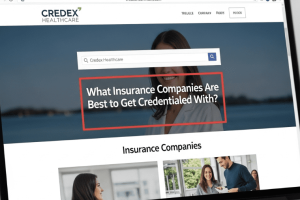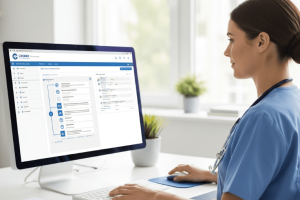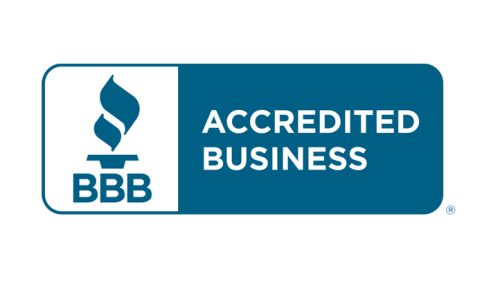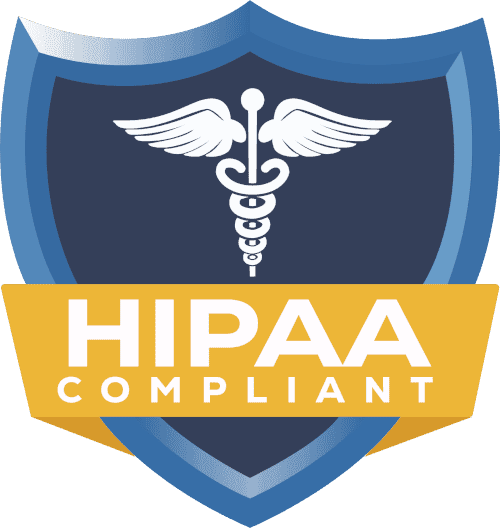Insurance Paneling & Provider Enrollment: A Beginner’s Guide 2025

Insurance panelling & Provider Enrollment is the process that verifies the educational and professional records of providers. Additionally, it assesses the healthcare worker’s ability to receive reimbursement from insurance companies. Moreover, it evaluates multiple documents as part of this vital process that lets healthcare workers join the insurance network. Further, all healthcare workers must obtain insurance credentials and sign up for plans because of the major perks listed above. However, there are a lot of paperwork requirements, which can take a lot of time. Therefore, insurance panel application and physician enrollment sound like a terrible process, but following the proper steps makes the healthcare insurance panelling easy.
In this blog, we will discuss Insurance Panelling & Provider Enrollment: A Beginner’s Guide 2025.
What is Insurance Paneling?
Insurance panelling is a process where doctors and hospitals treat clients with specific insurance plans and receive direct reimbursement for their services. Moreover, mental health professionals who wish to run long-term businesses need to obtain physician insurance credentialing. Insurance panelling & provider enrollment services allow healthcare professionals to serve patients with specific insurance plans and earn more money.
Recently, there has been an increase in emphasis on quality measurements, technology, and simplified application procedures. In addition, the CAQH Provider Data Portal has simplified the application process for organizations requiring professional and practice information, making the credentialing verification process easier for individuals filling out paperwork.
Insurance network participation also shows trustworthiness in the healthcare field. Patients, coworkers, and doctors may trust that a healthcare professional who is part of a major insurance network satisfies specific standards for professional behavior and clinical skill. In general, new healthcare professionals need to know how insurance panels work to do well in the field.
Difference Between Panelling and Credentialing
Panelling and credentialing are not the same thing. Moreover, people commonly use the phrases “panelling” and “credentialing” to imply the same thing. However, physician insurance credentialing is a lengthy process that insurance companies use to evaluate your professional qualifications, including your education, training, licenses, and work history.
Afterwards, the next step is to check the primary source. Moreover, it is when insurance companies contact medical schools, licensure boards, old employers, and other entities for the credentialing verification process.
Panelling is the final phase in the process. Moreover, the insurance firms look at the completed license review and determine whether they will add you to their network of providers. This option is dependent on more than just your talents. It also depends on how well the network works, where the providers are situated, and what the insurance company needs right now in your field. Furthermore, healthcare provider credentialing typically takes 60 to 120 days, and the main goal is to make sure you match the minimum standards.
Essential Differences Between Paneling and Credentialing:
Credentialing:
- Making sure that a person has the proper skills and knowledge.
- All applicants must present verification of their qualifications.
- Check out the training and skills you already have.
Paneling:
- It involves insurance network participation.
- You may still need insurance contracting even after the credentialing verification process.
- It depends on the current demands of the network and the market.
Credentialing vs. Paneling—Side-by-Side Comparison
| Aspect | Credentialing | Paneling |
| Purpose | Verify your qualifications | List you as in-network |
| When It Happens | First | After contracting |
| Can You Negotiate? | No | No |
| Handled By | CAQH, insurers | Insurer (automatically post-contract) |
Steps for Insurance Paneling
To join insurance networks effectively, you need to plan ahead and start months before you expect to start seeing clients. Healthcare personnel must submit different paperwork to each insurance company they wish to deal with in order for the licensing and painting procedure to begin. When you put in your application via CAQH, the insurance provider will assign you a unique application number.
Step 1: Preparation and Documentation:
You need to be a licensed practitioner and have a National Provider Identification (NPI) number to get started. If you give therapies, you will also require an IRS W-9 form, evidence of malpractice insurance, an explanation of any professional disciplinary measures taken against you, and a Drug Enforcement Agency (DEA) number.
Please check that you have all the right IDs:
- Use the National Plan and Provider Enumeration System to receive a National Provider Identifier (NPI)
- Your tax identification number is the same as your employer identification number (EIN).
- State License Numbers: licenses that are good for all the areas where you want to work
- DEA Number: If you’re going to offer drugs,
Step 2: Fill out your CAQH
Providers and managers simply have to submit their information once with CAQH, and they may share it with any plan they choose. Moreover, it allows them more time to take care of their patients. This step is crucial for successful panels since CAQH is the major source of data for most big insurance firms.
Make sure you fill out every field of your CAQH profile fully and accurately. Make sure that all the supporting documents you require are uploaded and that they are in the right format. In addition, it normally takes 4 to 8 hours to make the initial profile, but it saves a lot of time when you use it again later.
Step 3: Contact Insurance Providers
Even with CAQH, most insurance providers want you to fill out their own paperwork. Learn what each payer wants and how to send it to them. Some simply accept CAQH applications, while others demand further papers or their own applications.
Sending in applications in groups can help you stay organized. Start with your most significant payers and send in three to four applications each week. This way, you won’t have to perform too many follow-up duties at once.
Step 5: Efficient Follow-ups
Getting the documentation ready, looking into insurance firms, sending in applications (typically via CAQH ProView), and checking on the status of applications are all crucial parts of the process. Set up frequent dates to check in with each insurance provider, generally 30 days after you send in your application.
Use spreadsheets or tools for managing your practice to keep track of how your applications are doing. Write down all of your messages, reference numbers, and contact information so you may utilize them later.
Step 6: Address Deficits and Requests (As needed)
You should answer swiftly when people ask for further information or evidence. Most insurance companies offer you 30 to 60 days to correct issues, but if you reply quickly, they may frequently get things done faster.
Step 7: Contract Review and Execution
Once you have the go-ahead, read the participation agreements very carefully before you sign them. Pay particular attention to topics like payment rates, departure conditions, and administrative restrictions that might affect how your firm functions.
Major Insurance Companies You Should Consider
You need to know about the significant health insurance companies and what makes each one different in order to choose payer enrollment assistance for your paneling. The first step to setting up a strong revenue cycle is to become certified and sign contracts with insurance networks that are crucial to your company sector.
- Blue Cross Blue Shield
BCBS plans are independent businesses in various states and locations, offering low pay rates, management tools, and a wide range of clients. They typically have network appropriateness rules to expedite the painting process in underserved locations or high-demand specialties.
- Aetna
Aetna, a corporation offering private and public insurance, plays a significant role in health plans like Medicaid and Medicare Advantage, fostering forward-thinking among providers and offering reimbursement plans based on quality. However, specific locations may require more paperwork.
- United Healthcare
United Healthcare, a major US health insurance organization, offers numerous opportunities for providers due to its coverage of corporate and government shows, growing Medicare Advantage programs, emphasis on quality measurements, and high-tech service portals. Payment rates are fair.
- Cigna Health Care
Cigna offers services to corporations and the government, including employer-funded plans, managed care for Medicare and Medicaid, health initiatives, and simplified application processes with CAQH.
- Medicare:
Providers who care for adults 65 and older must have it. Just to be clear, Medicare doesn’t utilize CAQH. You may still use the information in CAQH to assist you fill out your Medicare registration forms, but only if the information is up to date. You need to fill out two separate forms via the PECOS system to get Medicare.
- Medicaid:
Each state has its own rules and payment rates for these programs. Many states utilize managed care organizations, which require their own systems for painting.
Documentation Checklist for Enrollment
The following are the essential documents required for enrollment.
Education and Credentials:
- Medical education papers, including transcripts, certificates, degrees, and licenses.
- Valid medical licenses from the service’s performing state.
Board certifications, including updated badges and necessary paperwork.
Registration and Identification Numbers:
- National Provider Identifier (NPI), Social Security number, Employer Identification Number (EIN), and DEA license card.
Important Information About Practice:
- Addresses, phone numbers, office hours, patient numbers, hospital affiliations, group procedures, and service deals.
Professional Liability Insurance:
- Current legal insurance with coverage amounts and dates.
Money Facts:
- W-9 tax forms for electronic money transfers.
Jobs and References:
- Full list of jobs in the past 5-10 years.
- Letters from former employers proving employment.
Work References:
- Company references.
- Letters of recommendation from department heads or supervisors.
Specific Documentation:
- Details about equipment and facilities.
- Certificates of approval for laboratories or structures.
Safety and Quality Documents:
- Reports of ongoing medical education (CME).
Let us take the stress out of insurance paneling.
Contact us at Credex Healthcare for tailored solutions that meet your practice’s unique needs.
Talk to a Credentialing Specialist
Common Paneling Mistakes to Avoid
Common errors include incomplete applications, outdated forms, inconsistent information, poor document quality, and simultaneous submissions. Moreover, providers must keep the following things in mind before panelling.
New Providers’ Errors in Insurance Panel Membership
Common errors include incomplete applications, outdated forms, inconsistent information, poor document quality, and simultaneous submissions.
- To avoid delays, start the credentialing and contracting process 6–9 months before patient visits.
- Insufficient follow-up and timely responses can lead to application delays or drops.
- Simultaneous submissions can make it challenging to track progress.
Strategic Planning Errors
- Bad payer selection based on market presence, payment rates, or network requirements.
- Network status check before applying to any insurance company.
- Insufficient market research based on local industry, patient types, and payer mix.
CAQH and Technology Errors
- Incomplete CAQH profiles and technology incompatibility.
- Malpractice Coverage Gaps, License Renewal Problems, and Omissions of Disclosure.
When to Use a Credentialing Service?
There are a lot of things to think about when deciding whether to do credentialing and hiring in-house or hire credentialing and contracting support services. Moreover, insurance panels may take a long time and be hard to grasp if you conduct them on your own.
- Launching a New Medical Practice: To establish a new company, you have to accomplish several things. Outsourcing licensing saves time and prevents problems from occurring in the first place.
- Applying to Multiple Insurance Providers: Keeping track of all the numerous documents for Aetna, Cigna, BCBS, Medicare, and other insurance may be complicated and take a long time.
- Having Limited Administrative Support: Most of the time, solo practitioners or tiny offices don’t have the staff to perform certification effectively.
- Facing Frequent Claim Denials or Delays: It might be because of flaws in credentialing or records that are too old. Experts can address these issues and prevent them from happening again.
- Can’t Track Recredentialing Timelines: Credentialing services make sure that renewals are done on time so that your engagement doesn’t terminate.
- Want to Speed Up the Enrollment Process: Professionals know how to submit complete and proper applications and follow up with payers in a positive manner.
- Unsure about CAQH, PECOS, or NPI Function: Credentialing services provide clients with competent guidance on all of their legal and technical issues.
The Best Insurance Panelling & Provider Enrollment:
Credex Healthcare is the best insurance panelling & provider enrollment company in the USA due to the following reasons.
Expert Credentialing Team: Professionals with a lot of experience who know a lot about CAQH, PECOS, and big insurance companies like Aetna, Cigna, BCBS, and Medicare/Medicaid.
Faster Sign-Ups and Approvals: Streamlined processes that cut down on wait times and help you quickly become approved by insurance panels.
Complete Solutions for Credentialing: Everything is done in one place, from the original application to follow-ups with payers, recredentialing, and hiring.
Tailored Support: Customized services are available for all types of medical practices, from one-person shops to new medical businesses.
Guaranteed Compliance and Correctness: Makes sure that your entries and papers meet all government and company standards so that they are rejected less often.
Clear Communication and Tracking: An exceptional support team will keep you up-to-date on your credentials regularly and let you see the whole process.
Final Thoughts:
At first, it could be hard to understand how to join insurance networks panelling and provider registration, but you need to know how they function to run a legal and practical medical company. To obtain more patients and be paid on time, you should set up your CAQH site, have the necessary documentation collected, and go to significant payers like Aetna, Cigna, and BCBS. If you’re a first-time provider, you may speed up the process and make it simpler by avoiding these frequent errors and thinking about professional licensing assistance services. Getting accepted by insurance networks is vital for the long-term development of your practice and your financial stability, whether you work alone or start a new healthcare business.
FAQs:
What does insurance paneling mean for providers?
You may assist customers who are insured by an insurance company and receive compensation for your services when you become an in-network provider.
How do I get paneled with top insurance companies?
First, establish an NPI, create your CAQH profile, and then submit applications to significant payers like Aetna, BCBS, and Cigna. You could speed up the process by using certification services.
Is provider enrollment the same as credentialing?
Not really. Credentialing makes sure you are qualified. Once you’re accepted, you may join the payer’s network by registering or painting.
What’s the fastest way to join insurance panels?
Consulting with the well-known, expert insurance paneling & provider enrollment services company like Credex Healthcare speeds things up. Moreover, it quickens the process by identifying frequent errors, ensuring sure papers are available, and checking in on a regular basis.
Do I need CAQH to get paneled?
Yes, most insurance providers require viewing your most current CAQH record to make sure you are qualified.


















